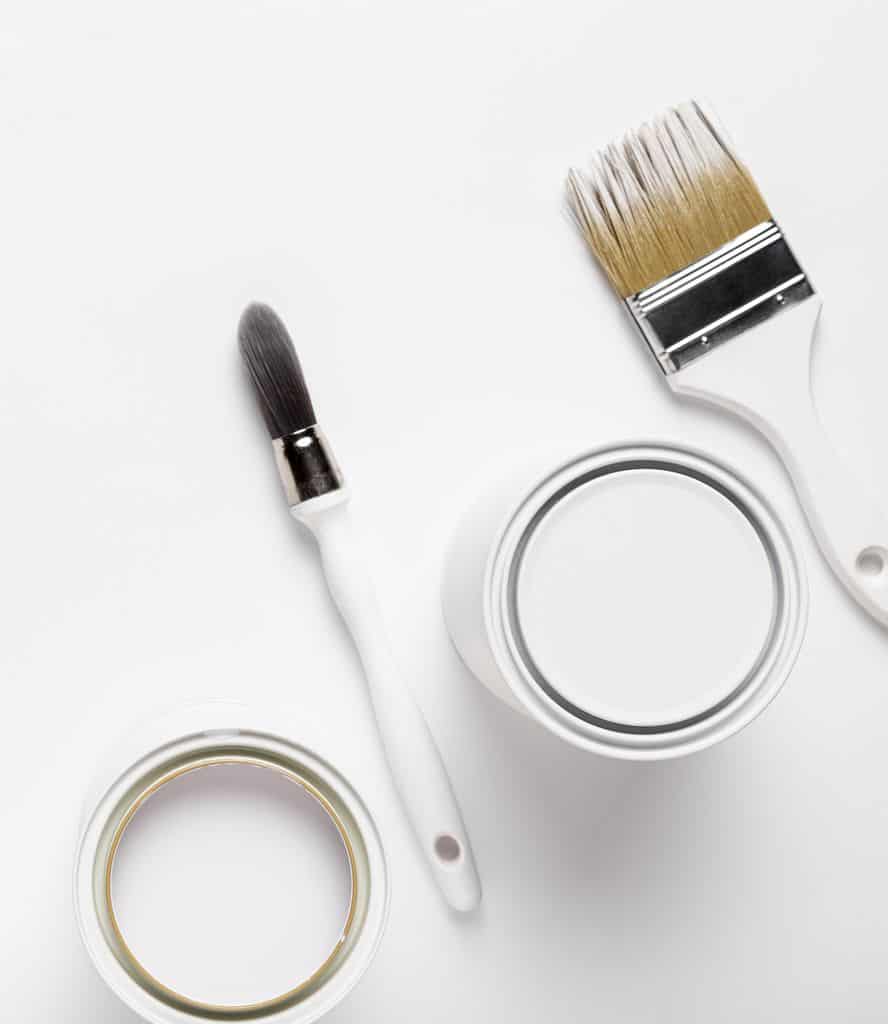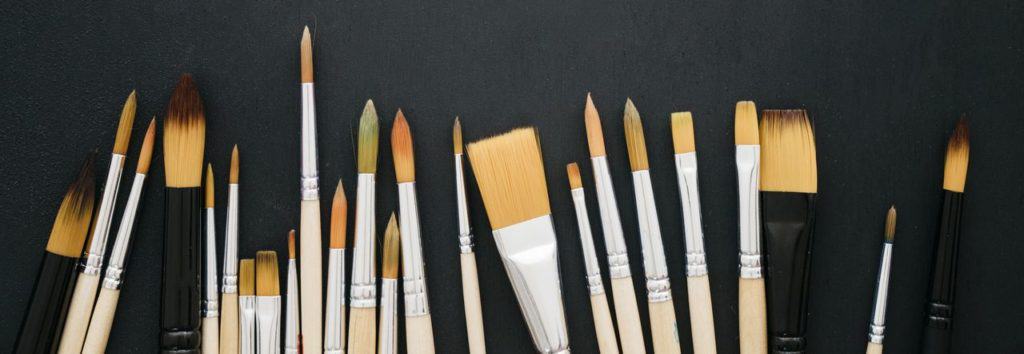
There are two types of paint brushes available: natural and synthetic paintbrushes. When you need them for painting a wall, finishing wood or applying stain, you have to decide whether you should go for a natural brush or the synthetic option. Read this comprehensive comparison and check out the usage of each brush.
Natural Brush
As the name goes you will get natural bristles for the paintbrush, and it can be made of the hair of animals such as badger, hog or sable.
Typical Uses of a Natural Brush
These are perfect for various household works such as:
- Varnish
- Oil-based paint
- Stain
- Milk paint
- Shellac
- Clay-based painting
- Application of shellac-based primer
- Chalk based paint
- Alkyd enamels
- Polyurethane
A set of natural brushes.
Find them on Amazon.
Advantages and Disadvantages of Natural Bristles Brushes
Pros
These types of brushes split naturally and have a smooth effect on any surface that is painted or finished. Natural brushes are designed to better pick up and hold. They allow you to apply thin layers of paint or stain. This also reduces streaks and spreads the paint across the entire workpiece.
If you use these brushes with water-based or oil-based paint, there are fewer chances of streaking as it happens with synthetic ones. You will get satisfactory results with your woodwork and in your house.
Cons
When you are looking for precision painting, then natural brushes might not be able to give you that as they tend to be more difficult to use. Also, natural brushes shed at the first few times you use it.
If you have bought a quality brush, then the shedding will stop after the second or third-time use.
Synthetic Brushes
A synthetic brush, as its name suggests, is made of polyester or nylon. Some bristles consist of a mix of both materials.
Typical Uses of a Synthetic Brush
These also give you nice job done, and you can work great with:
- Water-based primers
- Water-based painting
- Water-based wood finish
- Gloss paint
- Acrylic painting
- Painting wood panels
- Staining wood
A set of synthetic brushes
(Check price on Amazon).
Advantages and Disadvantages of Synthetic Brushes
Pros
These are made of nylon which is a highly durable material. They give a smooth finish and provide a better pick up.
Also, when you get polyester ones, these are more cohesive in their shape and give great control while working on the completion of all the details. Whatever material it is – polyester or nylon, or whether you get a combination – you will get the abovementioned type of work easier done. Thus, it is a popular choice as well.
This has a smooth texture and the springiness of the brush always gives a better finish on woods, also on furniture when you use water-based, gloss, eggshell or satin finishes.
When you are looking for an affordable option, you might want to know that synthetic brushes are cheaper than natural bristles.
Cons
During hot weather, nylon brushes soften which is also the case after using it with latex paint. This can cause a situation where the brush loses the ability to give a precise and smooth finish. This is a disadvantage compared to a natural one.
The paint pick-up quality of the synthetic paintbrush is lower than that of the other type. This means that you will have to reload the brush more often during a paint job.
Nowadays, paints are available with fast-drying techniques. For this reason, cleaning polyester brushes becomes harder. However, if you clean them thoroughly after the painting is done, they will give you a long-lasting service.
How to Find the Right Brush for Your Use
If you have not yet made up your mind about which type of brush you should get, you should consider
- the brush width,
- the kind of bristle, and
- the size of the brush.
Read on for more details about these criteria.
The Bristle Type
There are two types available in the market: natural and synthetic. The first one is made of animal hair, and the latter is made from nylon and polyester or both.
Natural bristles are good for working with oil-based paints and the synthetic is good with latex paint.
If you do it the other way around and use the natural brush with latex paint, it will absorb the color and it will become weak. This can make the painting job unnecessarily hard or even impossible.
Also, some synthetic brushes can be used for both oil-based and latex. It is always important that you also check the manufacturer’s instructions before you start the painting or finishing project.
Width of the Brush
You will not be surprised that will find a variety of different widths of brushes. The common range is from 1 to 5 inches.
You can apply more paint with a wider brush, but you need to match the surface with a width of the brushes to ensure an even distribution of paint or finishing material.
When you are painting a 4-inch-wide window case, for instance, you might need a 3-inch or 4-inch wide brush (depending on the angles).
The right size will help you cover the entire side of a surface and reach every edge of the window casing.
To ensure that you get the right brush you have to read the back of the package first and check the instructions before you start painting.
You can go for a 4 to 6-inch brush to paint large and flat areas. 2- to 3-inch brushes, on the other hand, are good choices for all kinds of smaller and flat surfaces.
You can use up to 15 inches for bigger and detailed projects. Examples of such tasks are painting or finishing walls, floors, cabinets or wood surfaces.
Use small 0.5-inch brushes for small and delicate kinds of jobs. This will allow you to apply more precision during the painting.
The Shape
The shapes of the brushes also depend on the type of the project and the surface of the workpiece.
A brush with a square end will work perfectly well on a flat surface. It will hold a lot of paint and distribute it evenly.
On the other hand, angled ones are best for trimming work, and give a better result in corners and on complex surfaces. This is because you will get the best control and straight line with this shape.
If you want more precise control over the painting you can use a sash brush which has the bristles cut at a slight angle. These brushes are the right choice for very intricate surfaces and artistic objects. These brushes are also a good choice if you wish to paint a pattern consisting of different colors.

Tips of the Bristles
You can choose from tipped ends and flagged ones.
The flagged tips will enable you to spread the material evenly across a surface. They often have a different length of bristles which increases the amount of paint they are able to hold.

There are also flagged brushes with widely distributed bristles (looking like a scrubber). However, they are mainly used for applying cleaning chemicals or wood care rather than painting or staining a surface.
Tipped ones have a pointed end and they are not straight or flat like a standard brush. If a precise and intricate application of paint is required, you should go for tipped brushes. They give better control and you will be able to paint more preciously. However, they are not a proper choice if you wish to finish large surfaces.
Conclusion
Different jobs require different types of brushes! For water-based wood finishes and paints, you might want to use a synthetic brush. For the oil-based ones, natural bristles will likely do a better job. They are also a good choice for the application of polyurethane or shellac.
Learn more about paints, stains, polyurethane as well as various wood finishes in our dedicated section.
Sources: PopularMechanics, SCJ


